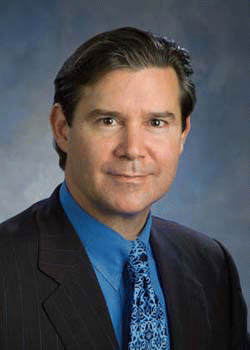What About Outcomes Data and Evidence of Clinical Efficacy?
Explore This Issue
March 2007It is important to understand all the issues and variables related to treatment, assessment of outcomes, and means of improving therapy. In the Medical College of Wisconsin Acoustic Neuroma and Skull Base Program, we established a protocol for all our patients undergoing Gamma Knife radiosurgery for primary or secondary treatment of their acoustic neuromas, which has been adopted by most neurotologists who now use this technology to treat patients with acoustic neuromas.
Following completion of the stereotactic radiosurgery, at six-month intervals, each patient undergoes a gadolinium-enhanced MRI as well as an audiometric test battery and caloric testing to assess peripheral vestibular function. Pretreatment they undergo a complete electronystagmography test battery to measure balance function, a complete audiometric assessment to measure hearing function, and facial nerve electromyography to measure facial nerve function. We have analyzed the early outcomes data and have summarized these data in an initial publication.1 Although there were a few patients who improved, most of the patients progressively lost hearing and balance function. The hearing and balance function outcomes over time were reported, as well as presenting these data for individual patients over time. This was unique in the stereotactic radiosurgery literature.
We have recently reassessed our outcomes with all of our patients and some patients have more than six years of follow-up after Gamma Knife radiosurgery. The outcomes, while similar to our preliminary findings, have emerged with an interesting pattern. We are now recognizing that the largest changes in vestibular function, pure tone averages, and speech discrimination occur within the first six months. This opens the possibility of intervention by the neurotologist when these acute changes occur. Clearly the need for multi-institutional clinical studies focused on determining the efficacy of specific interventions during this critical interval will need to be performed.
Is There Evidence of Reduction in Tumor Size over Time?
Another issue that needs to be addressed is tumor growth after radiosurgery. Based on our assessment of treatment outcomes, it is important to appreciate that there is an increased size of the tumor after radiosurgery. Typically this post-treatment edema will persist for six months; however, this may remain for up to one year. Consequently, pretreatment counseling should include these facts.
It is also the case that uniform methods to measure and report tumor size have not been used in papers published in the neurosurgery literature regarding Gamma Knife radiosurgery of acoustic neuromas. In fact, it has only been in the last few years that statistical comparison of tumor size before and after Gamma Knife radiosurgery treatment of acoustic neuromas has been completed and we published these outcomes in 2004 and 2005.1,2 There have been single cases discussed and occasionally reported that describe increased tumor size early after radiosurgery. The challenge is in making a decision about whether to operate these tumors and when. Pollock and colleagues3 emphasized the need to demonstrate sustained tumor growth by serial MRI before making the decision to operate, and also to review the case with the surgeon who performed the radiosurgery before a surgical decision is made.

Leave a Reply